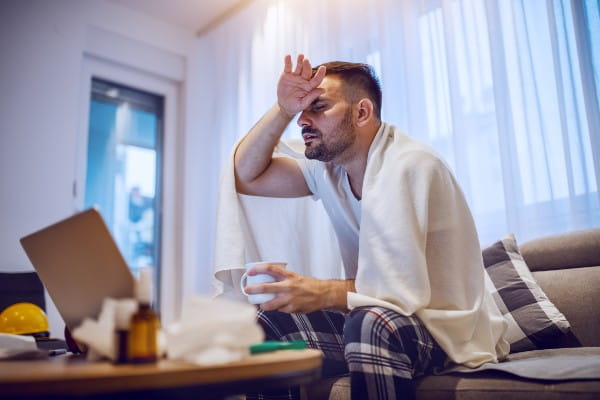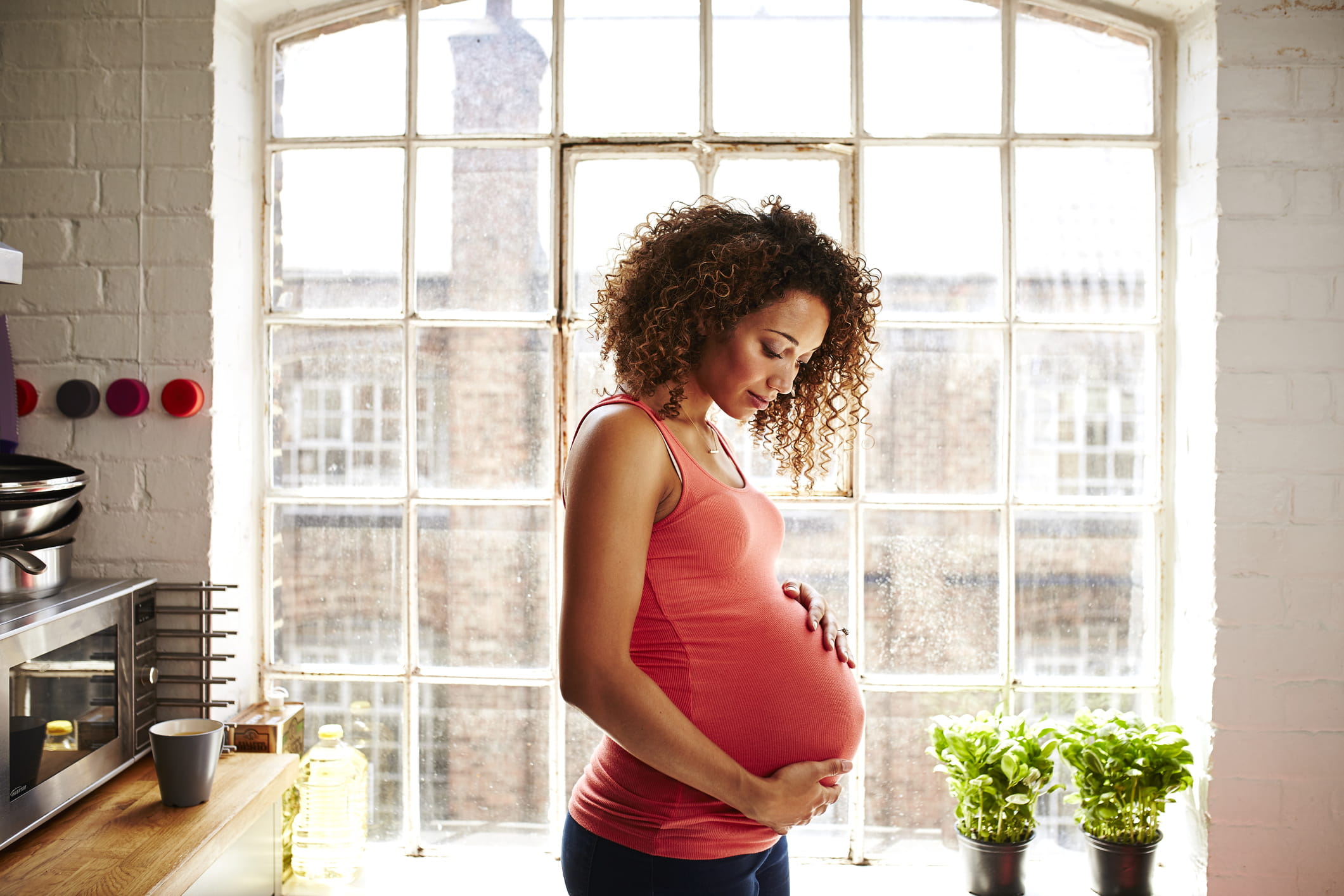Although we have made tremendous gains in the fight against COVID-19 with the COVID vaccine and booster shot, the highly contagious omicron variant created a surge in the number of positive cases of COVID this winter.
In addition to causing severe illness among unvaccinated individuals, the omicron strain resulted in great numbers of “breakthrough” infections for fully vaccinated and vaccine-boosted individuals.
There has also been concern about the rise in “coinfection” cases in which a person can become co-infected with both COVID-19 and the seasonal influenza (the flu). This syndrome has been characterized as “flurona.”
New Developments, New Processes
These new developments have brought about some shifts in the way we look at COVID-19 and the way we respond to it.
You might be asking:
- What do I do if I have COVID-19 or flu symptoms?
- Who do I see?
- What steps should I take?
- Where do I get tested?
- Do I need to quarantine? And for how long?
What Do I Do if I Am Feeling Sick?
Seek out the advice of a medical professional if you are experiencing any of these symptoms: Fever or chills, cough, shortness of breath or difficulty breathing, fatigue, muscle or body aches, headache, a new loss of taste or smell, sore throat, congestion or runny nose, nausea or vomiting, or diarrhea.
Even if your symptoms appear to be mild, all variants of COVID-19, including the Omega variant that is dominant worldwide, can lead severe disease or death for the unvaccinated or for immunocompromised people.
If you have already had COVID, you are still at risk for reinfection. That’s because the degree of protection you get from a previous infection varies widely. Early studies suggest that the antibodies you develop from having had a COVID infection are not a strong defense against omicron.
According to the Centers for Disease Control and Prevention, the preliminary symptoms of the flu and COVID-19 may appear two to 14 days after you’ve been exposed to the virus.
Take These Steps
Here are some basic guidelines to help you know what to do and where to go for help.
Emergency rooms are prioritizing patients with medical conditions requiring emergency care and those with critical illness.
Instead, contact your provider or use the COVID-19 E-Visit Assessment Form that can be found in your Riverside MyChart account (click Menu>>E-Visit>>COVID-19 Symptoms). This form goes directly to your provider and staff to help determine what testing is needed.
If you need additional consultation during your illness, your doctor may schedule a virtual visit with you as a safe and convenient way to be treated at your home. During a virtual visit, your doctor can conduct an evaluation of your progress and refer you to additional resources for your care, if necessary.
2. Get tested. The only way to confirm if you have flu or COVID-19 is to get tested. Your primary care provider will advise you to get a test for the flu or for COVID-19 as soon as you suspect you are sick or have symptoms.
There are two types of tests. One is the rapid antigen test. Antigen tests detect specific proteins on the surface of the coronavirus. These tests are sometimes referred to as “rapid diagnostic tests” because you generally can get test results in an hour or less.
To conduct the rapid test, a health care professional will swab your nose or throat. Or, if you are tested at a drive-in testing site, you may be asked to self-administer the test. Another option is to buy and use a rapid test kit to self-administer a test at home.
The second type of test is a polymerase chain reaction (PCR) test. The purpose of this test is to detect a genetic trace of the virus. As with the rapid test, a long nasal swab is inserted into your nostril to get a sample of fluid at the back of your nose. You may need to wait several days or longer for PCR test results. It depends on the type of test your provider orders and the current lab processing times.
People who are unvaccinated should quarantine for five days if they’ve been exposed, and then get tested. This also applies to people who are eligible for booster shots but have not received them yet.
In most cases, your lab test won’t tell you which variant of coronavirus you have been infected with. However, the CDC guidance on isolation, monitoring and treatment does not change based on which variant you have contracted.
The CDC advises that if you use a home test, and the test comes up negative, you should test again after a day or two to confirm the result. This is because a home test is not always as reliable as a lab test and should not be used as the sole basis for decision making. A negative result on a rapid home test does not necessarily rule out a Covid infection, the CDC reports.
3. Report back to your doctor concerning your test results. This is important, especially if you have a condition that puts you at high risk. There are treatment options, such as monoclonal antibodies, that your provider can give you to help can help your body fight Covid-19 and lower your risk for severe illness. This is particularly important for people who are in a high-risk group. However, these treatments must be given early on in your sickness to be effective.
If you never had symptoms but have a confirmed positive test, count Day 0 as the day you tested.
5. Inform others that you have tested positive. Let your employer know and contact any people that you spent time with before and when you started getting symptoms. This means anyone who was less than six feet from you for 15 minutes or more.
6. Protect others while you isolate. If you have tested positive, mask to keep your nose and mouth always covered, even if you have no symptoms. Then, follow the CDC guidance on your isolation period. Although the CDC doesn’t formally recommend testing after isolation, the new guidelines say you should take a rapid antigen test after the five-day isolation period if you have “access to a test and want to test.”
7. Do not physically interact during isolation. Stay in one room and keep away from other members of the household. Do not share meals. Someone should deliver food to your bedroom door if possible. If possible, use a separate bathroom. Always wear a mask, and if others must enter the room, make sure they are wearing a mask. Ventilate the room with an air purifier or by opening a window if possible. Disinfect all surface areas that you touch.
After isolation, the C.D.C. advises that you keep wearing a mask around others for an additional five days. Don’t remove your mask to eat or drink around other people, don’t travel, and don’t spend time around high-risk people until the masking period has ended.
8. Monitor your symptoms. Be sure to consult with a doctor if you are not recovering, are having trouble breathing, or having any symptom that causes you concern. If you have preexisting breathing problems, keep track of your blood oxygen levels. Seek medical advice if your blood oxygen level dips to 93 percent or lower.
9. Get critical care if your condition worsens. If you are experiencing any life–threatening conditions, such as difficulty breathing, high fever or dehydration, visit the emergency room or call 9-1-1. These symptoms need to be evaluated by a health care professional as soon as possible. If you are unsure whether the symptoms you are experiencing require care in the emergency department, please call a Riverside Nurse (757-595-6363) for more guidance.
10. Stop the spread. Riverside Health advises that if you feel ill, stay home. Wash your hands regularly and maintain social distancing.
If you’re not infected, there’s still time to get vaccinated and boosted. This is your most important step to ensure your protection against COVID and the seasonal influenza (flu). Also be sure to get the flu vaccine. The two vaccines can be administered at the same time.
Riverside continues to recommend the COVID-19 vaccination and booster and offers the vaccines throughout the region. Schedule an appointment through Riverside or call 757-534-5050.
Additional information on Riverside’s related services is available at COVID-19.
Vaccines help your immune system recognize a virus so it can mount a strong attack against it if you get exposed. there are several ways you can find a vaccine provider:



